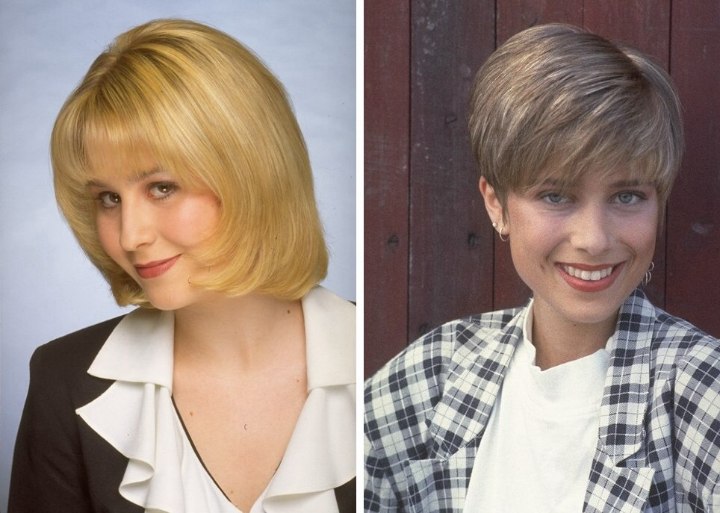1990s Hairstyles

Q: I'm doing a project for school, and I need to know more about hairstyles in the 1990s. Can you tell me more about hairstyles for women that were popular in that era? What factors influenced the hairstyles?
A: The 1990s brought a dramatic shift in women’s hairstyles, moving away from the extreme volume and heavily teased looks of the 1980s toward sleeker, more natural textures. This decade celebrated effortless movement and soft layers that felt modern at the time.
One of the most iconic hairstyles of the decade was The Rachel, made famous by Jennifer Aniston’s character on Friends. This shoulder-length cut featured heavily layered ends that flipped outward, creating bounce and movement without excessive teasing or hairspray. The look was high-maintenance - women needed regular trims and styling products to keep the layers from looking frayed - but its popularity was undeniable. Hair salons reported endless requests for The Rachel, proving how deeply television and celebrity culture influenced beauty trends.
Beyond this look, the nineties offered a range of styles that balanced polish with ease. Chin-length bobs with subtle layers became a go-to for women who wanted something versatile: soft enough for everyday wear but polished enough for work. These bobs often had a slight inward curl at the ends, a nod to the decade’s preference for understated elegance.
Shorter cuts also gained momentum, with many women opting for pixie cuts and super short styles that highlighted the neck and cheekbones. Edgier variations included asymmetrical shapes or hidden undercuts, reflecting the decade’s mix of minimalism and rebellion.

Hair color trends moved toward natural-looking rather than stark contrasts. Face-framing streaks, often in blonde or caramel tones, were everywhere. At-home highlighting kits also became more advanced, letting women experiment with sun-kissed effects without frequent salon visits.
Another major shift was the focus on enhancing natural texture rather than fighting it. Products like mousse, texturizing sprays, and lightweight gels allowed women to work with their hair’s natural waves or curls instead of forcing them into rigid styles. This philosophy aligned with the decade’s broader emphasis on individuality and effortless cool.
Finally, the beauty industry saw a surge in professional-grade tools entering the mainstream. Ceramic flat irons, ionic blow dryers, and thermal protectants became household staples, making sleek, frizz-free hair achievable without salon trips. This accessibility helped cement the nineties aesthetic, where hair looked expensive but required minimal obvious effort.
In many ways, 1990s hairstyles were a reaction to the excess of the eighties, favoring movement, subtlety, and a touch of rebellion.
©Hairfinder.com Photos: Corel
See also: Vintage hairstyles